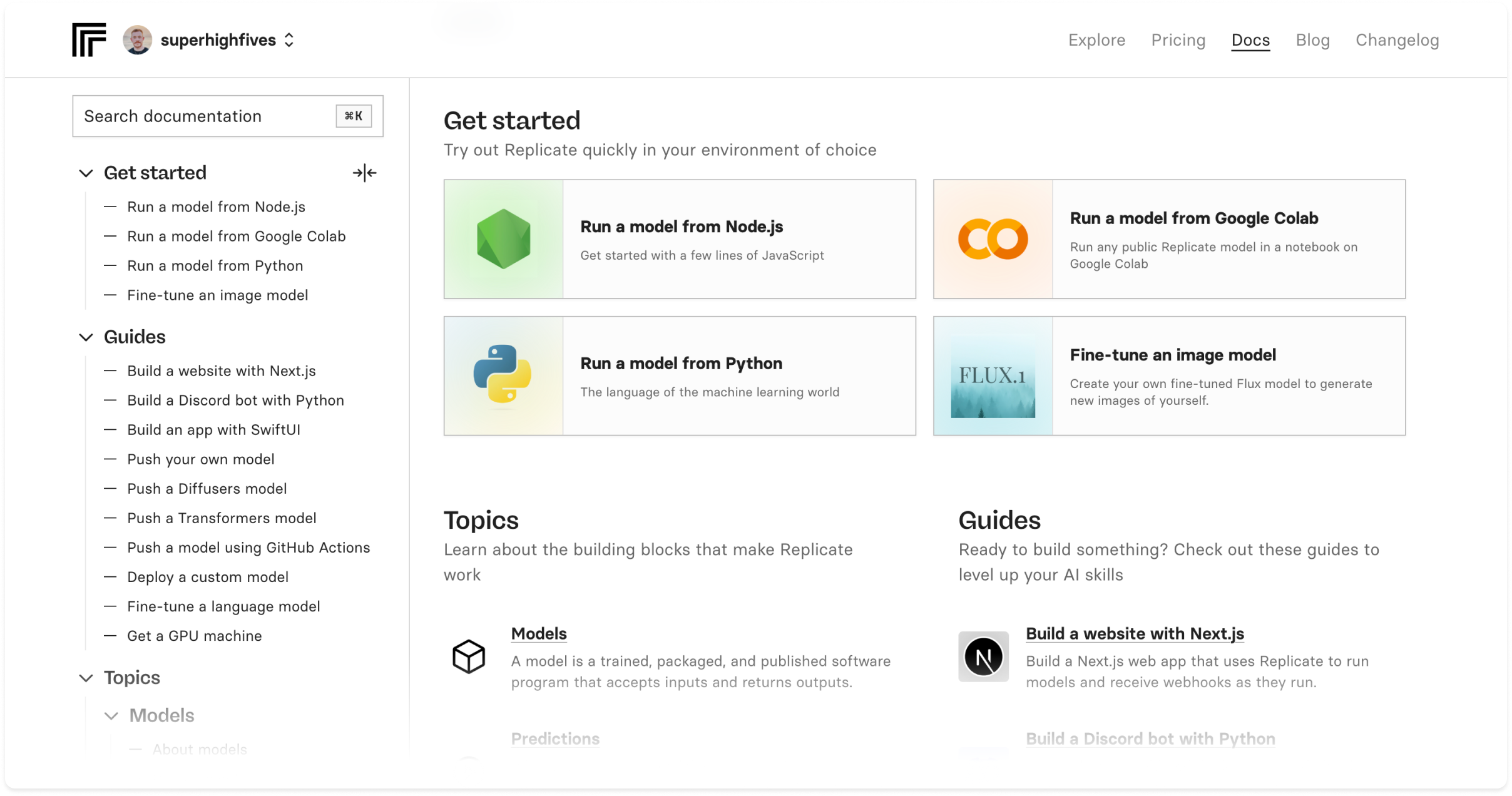Replicate: Complete Buyer's Guide
Cloud infrastructure platform that abstracts GPU complexity for scalable AI model deployment through pay-per-second API access.
Replicate is a cloud-based AI model deployment platform that eliminates GPU infrastructure complexity for organizations requiring programmatic access to machine learning models. The platform serves as a specialized infrastructure layer, enabling AI Design professionals to deploy and scale image generation models through API-first architecture without managing underlying hardware.
Market Position & Maturity
Market Standing
Replicate occupies a specialized infrastructure niche within the broader AI image-generation market, which is projected to grow from $418.5 million in 2024 to $2.63 billion by 2035 at an 18.2% CAGR[3].
Company Maturity
Strong financial backing evidenced by $40M Series B funding[223] indicates investor confidence in the platform's technical approach and market opportunity.
Growth Trajectory
The platform demonstrates substantial market traction with 30,000 paying organizations and 2 million total signups as of 2025[223].
Industry Recognition
Competitive differentiation emerges through infrastructure abstraction rather than creative capabilities, positioning Replicate as an alternative to both self-hosted solutions and proprietary creative platforms.
Longevity Assessment
The platform's growth trajectory and funding status suggest continued operational stability and development investment.
Proof of Capabilities
Customer Evidence
Replicate demonstrates practical implementation success through documented customer deployments, including the Painter UI implementation that showcases webhook automation for workflow integration using Replicate for fine-tuning and image generation[222].
Quantified Outcomes
Technical performance is validated through the platform's ability to eliminate infrastructure management complexity that causes 40% failure rates in on-premise Stable Diffusion deployments due to GPU bottlenecks[106][112].
Market Validation
Scale validation is evidenced by the platform's 30,000 paying organizations and 2 million total signups[223].
AI Technology
Replicate's technical architecture centers on containerized AI model deployment through its proprietary Cog tooling system, which packages custom models with automatic GPU optimization and scaling capabilities[211][219].
Architecture
Serverless scaling architecture enables automatic scaling from zero to enterprise throughput[219].
Competitive Advantages
Infrastructure-Focused Differentiation positions Replicate as a specialized alternative to both GUI-focused creative platforms and enterprise creative suites.
Market Positioning
Strategic Positioning as infrastructure abstraction rather than creative tooling creates a distinct market niche.
Win/Loss Scenarios
Win Scenarios favor organizations with API integration capabilities, variable AI processing needs, requirements for diverse model experimentation, and budget constraints preventing GPU infrastructure investment.
Key Features

Pros & Cons
Use Cases
Integrations
Pricing
Featured In Articles
How We Researched This Guide
About This Guide: This comprehensive analysis is based on extensive competitive intelligence and real-world implementation data from leading AI vendors. StayModern updates this guide quarterly to reflect market developments and vendor performance changes.
226+ verified sources per analysis including official documentation, customer reviews, analyst reports, and industry publications.
- • Vendor documentation & whitepapers
- • Customer testimonials & case studies
- • Third-party analyst assessments
- • Industry benchmarking reports
Standardized assessment framework across 8 key dimensions for objective comparison.
- • Technology capabilities & architecture
- • Market position & customer evidence
- • Implementation experience & support
- • Pricing value & competitive position
Research is refreshed every 90 days to capture market changes and new vendor capabilities.
- • New product releases & features
- • Market positioning changes
- • Customer feedback integration
- • Competitive landscape shifts
Every claim is source-linked with direct citations to original materials for verification.
- • Clickable citation links
- • Original source attribution
- • Date stamps for currency
- • Quality score validation
Analysis follows systematic research protocols with consistent evaluation frameworks.
- • Standardized assessment criteria
- • Multi-source verification process
- • Consistent evaluation methodology
- • Quality assurance protocols
Buyer-focused analysis with transparent methodology and factual accuracy commitment.
- • Objective comparative analysis
- • Transparent research methodology
- • Factual accuracy commitment
- • Continuous quality improvement
Quality Commitment: If you find any inaccuracies in our analysis on this page, please contact us at research@staymodern.ai. We're committed to maintaining the highest standards of research integrity and will investigate and correct any issues promptly.